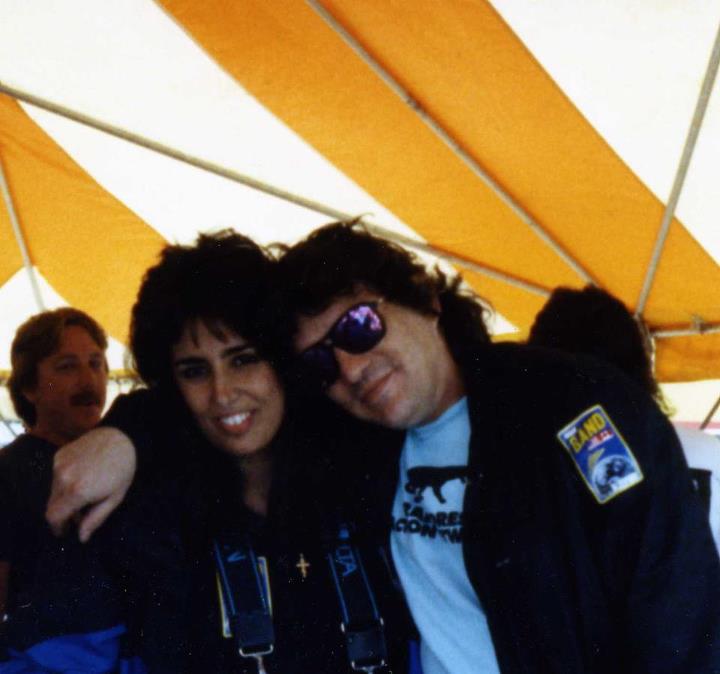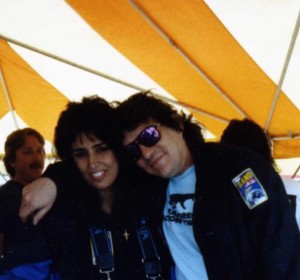On December 29, Rick Danko, the bass player and singer in The Band, would have been 70. Danko grew up in Ontario, Canada, and left school at 14 to become a rock musician. His break came when he was tapped by Ronnie Hawkins to join The Hawks, one of Canada’s hottest bands at the time. It was there that he met Levon Helm, Garth Hudson, Robbie Robertson, and Richard Manuel. In 1963 Danko, Helm, Robertson, Hudson, and Manuel broke away from Ronnie Hawkins to form their own group. According to Rick’s obituary in the New York Times, they toured under such names as the Canadian Squires. After performing session work for John Hammond, Jr., the group met John Hammond, Sr., who in turn introduced them to Bob Dylan. They soon joined Dylan in Woodstock. During Dylan’s hiatus from touring, they began to record in the basement of the big pink house in West Saugerties, which was founded by Rick Danko. The tapes from those sessions became known as The Basement Tapes. The group became known as The Band and went on to record ten albums that are considered among the most influential of all time. In 1994, Rick joined fellow group members Garth Hudson and Robbie Robertson on stage when The Band were inducted into the Rock ‘n’ Roll Hall of Fame.
To get a sense of the man behind the touring persona, I recently talked with Carol Caffin, Rick’s friend and longtime publicist. She described Rick as a “badass,” but in the next breath, spoke of him as having an “innocent quality”—one of looking at the world around him with a sense of wonder. He was also, by turn, goofy, crazy, and shy. Not book-educated, he was thrust into the spotlight, into the world of rock and roll, and was able to adapt. “Stage Fright,” the song, was a good fit for his personality. He had a charismatic, one-of-a-kind spirit.
In 1990, Carol met Rick backstage after a concert. “We talked for a while and just had a natural rapport,” she recalls. Rick invited her to the next Band show, advising her to “tell them you’re my cousin” when she got to the door. “Of course, Rick said that to everyone,” she says. “But I didn’t know that then.”
At the time, she was working for a top entertainment lawyer in Philadelphia and was freelancing as a publicist and rock journalist. She’d written a number of articles in the Philly area about Rick and The Band. Unbeknownst to Carol, a friend sent Rick some of her press clips. Soon after, Rick called her at work. Carol remembers that “it was as exciting and surreal as if John Lennon had called me.” Surreal though it was, Carol recalls “just knowing” that it was Rick as soon as she answered the phone. “I recognized his loud, heavy breathing, which I later found out was due to asthma.” Rick told her he’d read some of her clips and was impressed by her writing. “You know more about me than I do, my dear,” he said with a chuckle. “I was really embarrassed,” Carol says, “but also happy that he liked my writing.” He suggested that perhaps they could work together and invited her, again, to another show. “This time, I was actually on the guest list,” she recalls.
Carol and Rick talked about ways in which they could work together. “I knew I could help him,” she says. “I knew his music, I knew his audiences, and I knew how to do publicity.” The first interview she set up for Rick was a phoner with legendary Philly DJ Ed Sciaky on WYSP, a 50,000-watt classic rock station. Sciaky was an important radio personality, having helped to launch the careers, via his broadcasts, of Billy Joel and Bruce Springsteen, among others.
As Carol describes it, at the time she met Rick, his press biography was typewritten on two sides of one sheet of paper—and the copies were Xeroxed crookedly. “I found it a little sad,” says Carol. “Not befitting a rock star of Rick’s stature—or any artist, really.” He had no press kit, she recalls, “just this bio full of typos and hyperbole. Rick probably never looked at it.” One of the first things Carol did was to develop a professional press kit for Rick, starting with a new—and accurate—bio. “There was no Internet then, and articles on The Band were hard to come by unless you put an ad in Goldmine or something,” she says. So Carol used her own knowledge, snippets from the print interviews she could find (including those by Ruth Spencer for the Woodstock Times), and, of course, info from Rick himself. The Elliott Landy pic that was being used as a press photo was also out of date, and eventually, she got a newer press photo.
Soon, Carol was working in tandem with Rick’s booking agent. “Rick liked what I was doing and knew I was for real; I actually worked in the industry and had my own contacts. We quickly developed a mutual trust.” Carol started with tour publicity—making sure that Rick had advance press coverage in every market he played. “That meant print, radio, and, where possible, TV,” says Carol. At that time, it involved “advancing” his tour dates by getting in touch with the venues and promoters, contacting all the media, sending out press kits, pitching stories, and soliciting interviews. She started printing itineraries for Rick to help him get organized and would fax updates to him regularly. “Everything was done by fax and phone. If he was on the road, I would fax his schedule to the hotels. That was kind of state-of-the-art then. If Rick were here today, he’d definitely have an iPhone.”
Rick started seeing positive results—the show that he realized how much of a difference publicity made was at the Towne Crier in Pawling. “Phil Ciganer, who owns the club and is still a good friend of mine, told Rick he was very happy.” Soon, Carol was working together with Rick’s agent on tour routing. “It was important to make sure that the routing made sense from a media standpoint and logistically, from a travel standpoint, as well.” She also suggested that Rick play in all the top markets, like New York, LA, Chicago, Boston, DC, and LA. Rick’s solo fan base wasn’t as strong in California, so fewer shows were booked there. “The goal was to strengthen existing markets and build new ones.”
In the fall of 1990, Rick performed with Eric Anderson and his friend, Norwegian singer/songwriter Jonas Fjeld, at an impromptu gig at the Joyous Lake. After the show, they returned to Rick’s house to hang out, sing, and play. Rick thought their harmonizing was magical and that they had a lot of natural chemistry together. In February 1991, Rick went to Norway, where Eric and Jonas lived, for a month. During that time, the three recorded several songs, which were released in that country on the Stageway label. When he returned, Rick called Carol around 4 am— “This was not unusual,” said Carol. “He called lots of people in the middle of the night—ask Tom Pacheco!” During that call, he played a couple of songs that the trio had recorded: “Drifting Away” and “Blue River.” Carol thought the former was especially beautiful. Rick was singing lead, and Eric was harmonizing. Rick sent her the tape, then the CD and Carol began making copies to send out to select DJs and journalists. A buzz started to develop. “I knew we wouldn’t get in any kind of rotation—I was sending them home-quality cassettes—but many stations, particularly the NPR and other public stations, started playing it from the tapes! This gave me a tool to get Rick some radio appearances, rather than just interviews; he started performing these songs on the air.” Soon, Carol had Rick and then the trio, booked on syndicated shows like World Café. “I was also able to get Rick on some shows that were out-of-format, like ABC news radio, because the host of one of the shows, a political commentator, was a fan.”
Carol told Rick she was going to get the trio a US record deal. Rick joshed her, and Carol said, “Watch me.” She continued to send tapes to the media and made it known that “we were in the process of trying to find the right American label for the music. Rick said this in interviews also.” The Norwegian label, Stageway Records, took notice. They liked what was happening. They sent her CDs to use for promotion and soon, with the trio’s blessing and support, began shopping a US record deal. “Actually, it was a licensing deal,” Carol clarifies, “because Stageway owned the masters.” Rykodisc was a very hot label at the time, particularly for Americana and acoustic music. “I contacted the label and received a phone call from David Greenberg at the label saying that they were interested and wanted to set up a meeting,” Carol remembers. “Rick asked me to go to the meeting, which was in New York, because they were attending a music conference there.” Rick gave Carol carte blanche to speak for him. “When we got the contract and an actual release date—September 1993—I was so happy for them,” Carol says. “I felt like this was something tangible, an accomplishment for everyone involved.” Rick congratulated her, saying, “I’m so proud of you.”
In the late summer of 1999, Carol was doing national press for Rick’s Breeze Hill album and, by that time, was also working with John Hall. Rick was booked on John’s show at Opus 40. Carol went to the show with her husband and her two-year-old son. At this point, though she was working with Rick and speaking to him daily, she hadn’t seen him in over a year. As she sat on the steps near the rehearsal house at Opus 40 with her son in his stroller, her husband came up behind her and said, “Look who I found.” It was Rick, and he was not looking well. His face was puffy, and he had put on a tremendous amount of weight. “It was not just regular weight gain,” she says. “He looked ill.” Rick gave her a big hug, and her heart sank.
Soon after the concert, Rick and Carol were speaking by phone—trading jokes as though nothing had happened—despite her misgivings over his health. Some months later, Carol did press for Rick for his show at the Tin Angel in Philadelphia and publicized his tour of the mid-west. His final gig was at The Ark in Ann Arbor, MI. He came home with Aaron Hurwitz(Professor Louie). Rick died in his sleep on—December 10—just shy of his 57th birthday.
Carol says that Rick lived to play, and he lived to perform. Some have said that it was the stressful tours that ushered him out, though Carol feels he may have left sooner if he hadn’t been touring. She has tried over these past 14 years since Rick’s passing to keep his name alive in a positive light. She created a Facebook page for Rick. More recently, she has been lobbying to get Rick on Canada’s Walk of Fame. Another cherished dream is to see a memorial bench and/or park established in Rick’s name in Woodstock. Stay tuned.
~ Weston Blelock



I feel blessed to have been able to see Rick perform with The Band and solo many times over the years. I miss him terribly.
Dear Carol,
Love the pic with you and Rick. Loved the article. Love all the great work you have done and are still doing. Rick must have thought he struck it rich when you came into his life.
God bless and
Merry Christmas to you and yours,
Ken and Sheri Baker
Phoenix, AZ.
It’s been 14 years since his death, not 25.